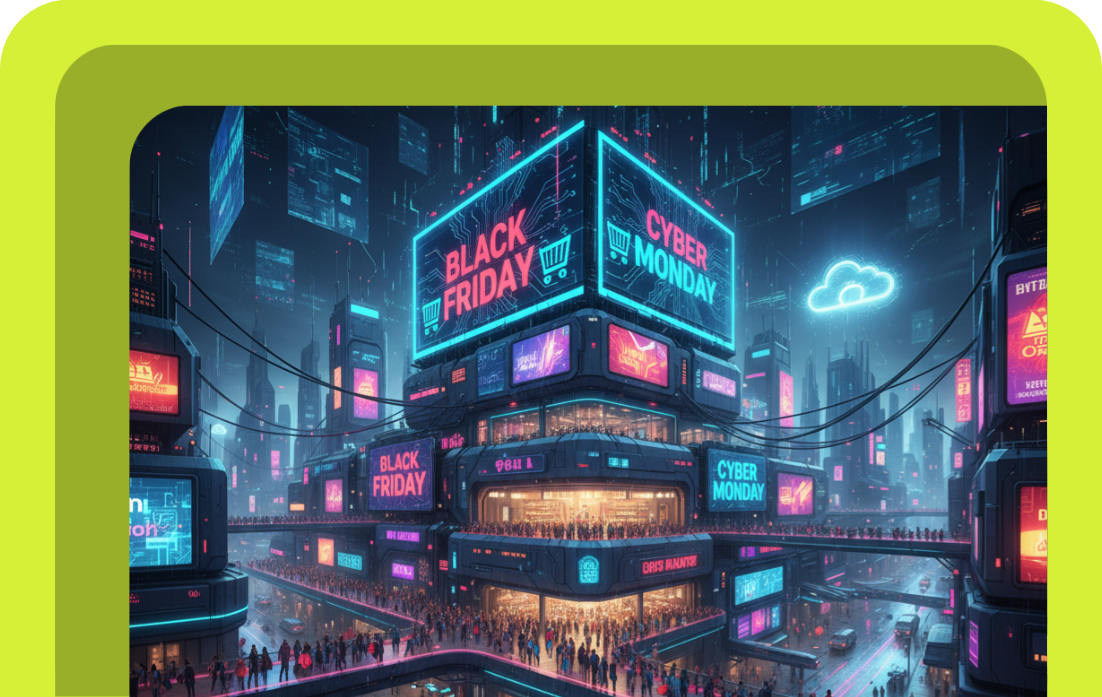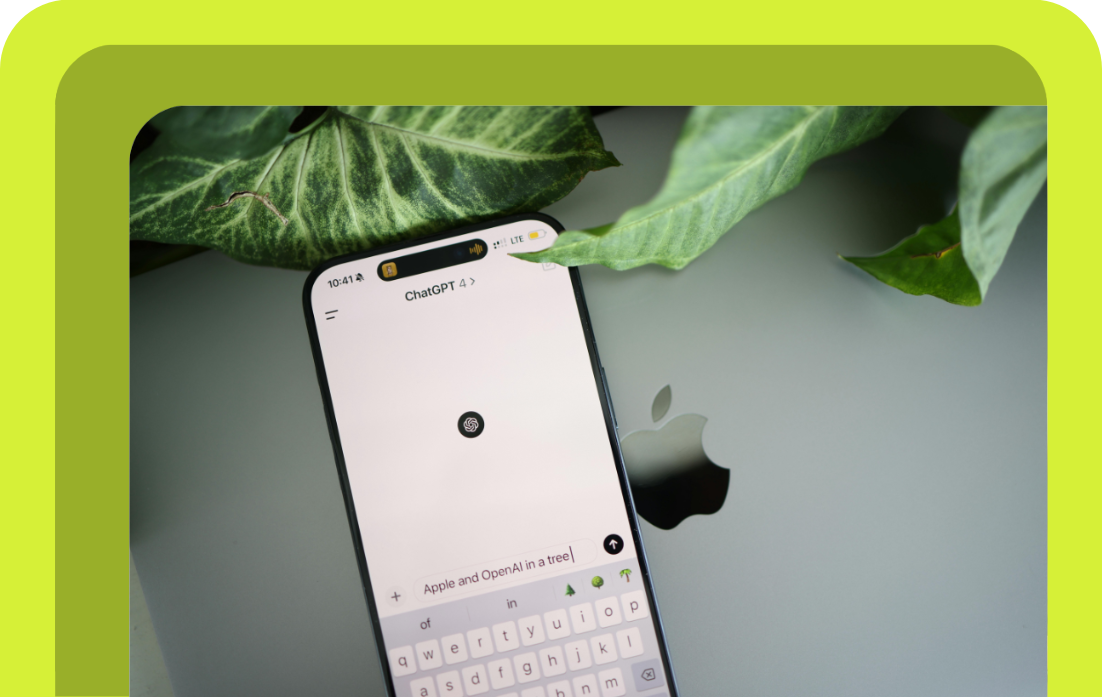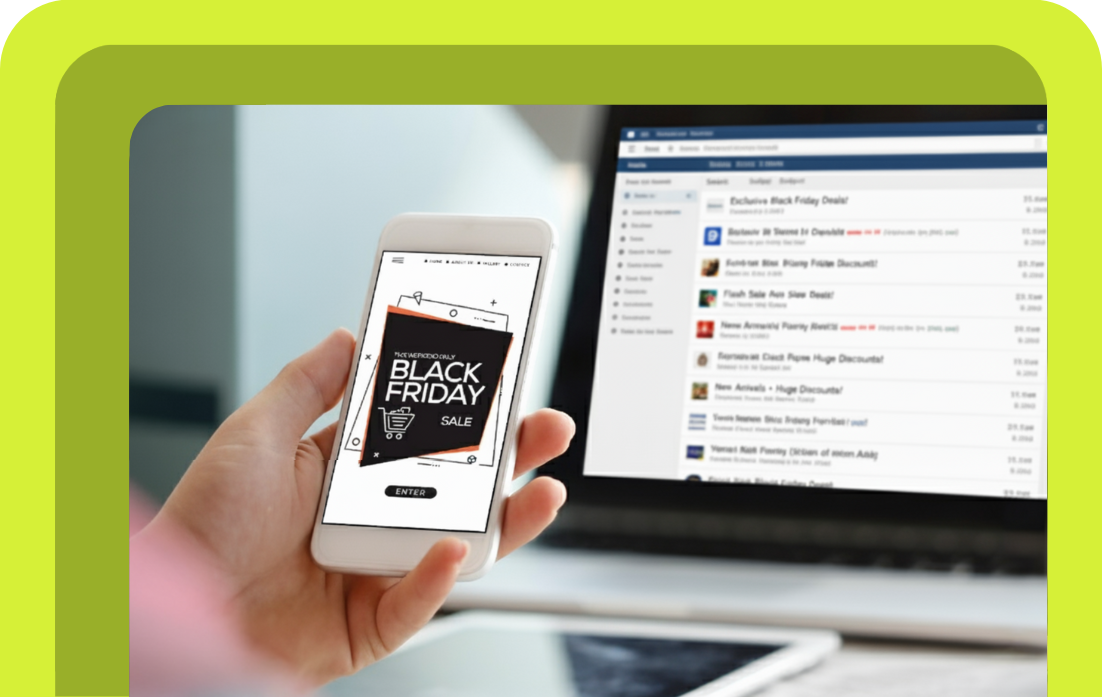Imagine having a system that nurtures leads, recovers lost sales, and brings back old customers—all without you lifting a finger. That’s the magic of email automation in ecommerce. Whether you’re running a small online shop or a fast-growing brand, email marketing flows can work behind the scenes, converting new subscribers into loyal customers and maximising your ROI on autopilot.
And the numbers don’t lie. Email marketing delivers an average return of $36 for every $1 spent, making it one of the most cost-effective digital marketing strategies out there (optinmonster.com). Plus, automated email flows generate 320% more revenue than non-automated emails—so if you’re not leveraging marketing automation, you’re leaving money on the table (campaignmonitor.com)
In this article, we’ll break down the five essential email flows for ecommerce that will improve your email marketing strategy, increase conversion rates, and enhance your customer experience. From welcome series to abandoned cart recovery, we’ll explore how each email flow works, why it matters, and how you can automate it to drive consistent sales. If you’re ready to optimise your ecommerce email marketing, build stronger customer relationships, and boost revenue on autopilot, let’s dive in.
Key Topics
Welcome Series
First impressions count—especially in email marketing. When a new subscriber joins your email list, they’re at peak interest. In fact, welcome emails boast an impressive open rate of 91.43%, making them the perfect opportunity to engage, build trust, and set expectations. (salesmate.io)
A well-crafted welcome flow doesn’t just say “hello” and move on—it creates an experience. It guides new customers, introduces your brand’s story, and nudges them towards making a purchase. Get this right, and you’re setting the foundation for long-term customer engagement.
What Should Your Welcome Series Include?

A great welcome email campaign is more than a single message—it’s a carefully planned email flow designed to nurture and convert. Here’s what it should include:
1. The Greeting & Warm Welcome
- Keep it personal! Use the subscriber’s name to make it feel tailored.
- Thank them for signing up and let them know what they can expect from your emails.
- A simple call to action (CTA), like exploring your website, helps start engagement.
Best Practice: Ensure this email is sent immediately after someone subscribes.
2. Your Brand Story & Values
- Let them know what makes your brand unique.
- Share your mission, values, and how your products can help them.
- Keep it short, engaging, and customer-focused.
Best Practice: Make it relatable—customers connect more with brands that feel personal.
3. Exclusive Incentive (If Applicable)
- Let them know what makes your brand unique.
- If you promised a discount or special offer for signing up, now’s the time to deliver it.
- A clear CTA (e.g., “Use code WELCOME10 for 10% off your first purchase”) drives conversions.
Best Practice: Add urgency with a limited-time offer to encourage action.
4. Product Recommendations
- Use customer data to personalise product suggestions.
- Highlight bestsellers or complementary products based on their interests.
- Include eye-catching images and easy “Shop Now” buttons.
Best Practice: Segment your list to send targeted messages based on browsing behaviour.
5. A Thank-You & Next Steps
- A heartfelt thank-you email strengthens the relationship.
- Offer helpful resources like guides, blog posts, or customer reviews.
- Let them know they can always reach out for support.
Best Practice: Encourage engagement—ask them to follow you on social media or join your community.
How to Optimise Your Welcome Series for Better Results
- Timing Matters: Send the first email immediately, and follow up within a few days.
- Personalisation is Key: Use customer names, behaviour tracking, and dynamic content.
- Make it Mobile-Friendly: 81% of emails are opened on mobile, so design accordingly.
- Test & Analyse: Track open rates, click-throughs, and conversions to improve performance.
Set the Right Tone from Day One
A strong welcome series isn’t just about introducing your brand—it’s about building lasting relationships. With the right email marketing strategy, you can engage subscribers, boost conversions, and turn new sign-ups into loyal customers.
Abandoned Cart Flow
We’ve all done it—filled our online shopping cart, got distracted, and never checked out. But for ecommerce brands, every abandoned cart is a missed sales opportunity. The good news? Abandoned cart emails have an average conversion rate of 18.64%, making them a powerful tool for recovering potential lost sales.
An effective abandoned cart email flow doesn’t just remind shoppers of what they left behind—it persuades them to return, builds trust, and creates a sense of urgency. If done right, this email marketing strategy can turn abandoned carts into revenue on autopilot.
The Must-Have Emails in Your Abandoned Cart Flow
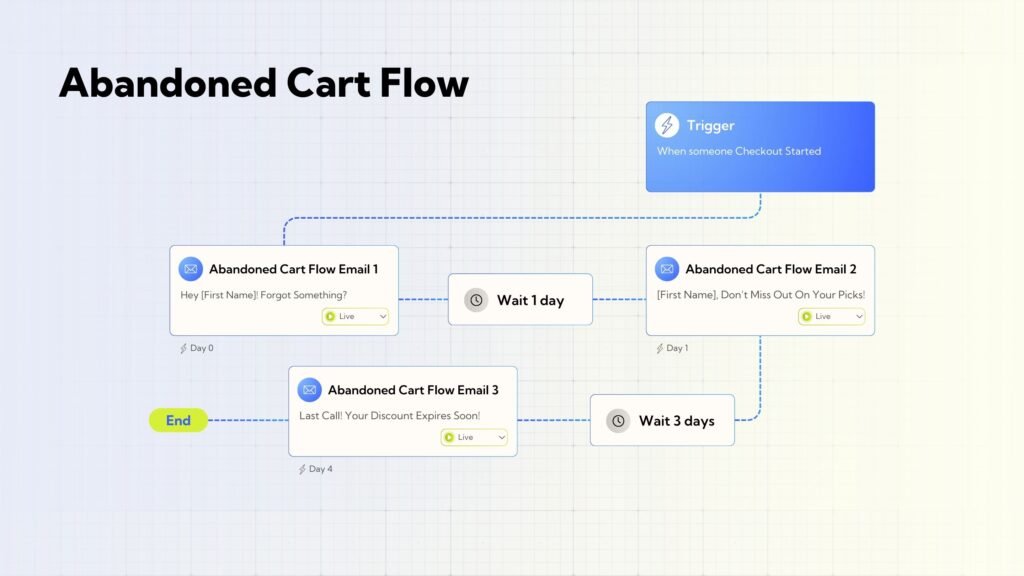
To truly maximise conversion rates, your abandoned cart email flow should follow a structured approach:
1. The First Reminder (Sent Within an Hour)
- A friendly reminder email that simply acknowledges they left items in their cart.
- Keep it light, conversational, and include a clear call to action (CTA) like “Return to Your Cart.”
- Show images of the items in the cart to rekindle interest.
Best Practice: Send this within the first hour—when shoppers are most likely to return and complete their purchase.
An effective abandoned cart email flow doesn’t just remind shoppers of what they left behind—it persuades them to return, builds trust, and creates a sense of urgency. If done right, this email marketing strategy can turn abandoned carts into revenue on autopilot.
2. The Urgency Email (Sent 24 Hours Later)
- Reinforce the importance of acting fast—let them know their cart may expire or that stock is limited.
- If applicable, include social proof such as customer reviews to build trust.
- Keep the subject line engaging, e.g., “Oops, your cart is still waiting – but not for long!”
Best Practice: Use personalisation—mention the shopper’s name and highlight key benefits of the product.
3. The Final Nudge (Sent 48 Hours Later, Optional Discount)
- Offer a gentle last-chance reminder with an added incentive (if suitable).
- A discount code or free shipping offer can help overcome hesitation.
- Keep the CTA strong: “Complete Your Purchase Now & Enjoy 10% Off”.
Best Practice: If you offer a discount, use limited-time offers to drive urgency.
How to Optimise Your Abandoned Cart Flow for Maximum Conversions
- Perfect the Timing: The sooner the reminder email is sent, the better the chances of recovery.
- Use Persuasive Copy: Keep it engaging, benefit-driven, and customer-focused.
- Test Subject Lines & Content: A/B test different subject lines and messaging to see what gets the most open rates.
- Include a Seamless Checkout Link: Make it easy—one-click return to the cart should be the goal of these emails.
- Leverage Personalisation & Segmentation: Tailor emails based on customer data, cart value, or browsing behaviour.
Turn Abandoned Carts into Revenue
The reality is, abandoned carts will always happen—but with the right email marketing automation, you can bring many of those shoppers back to your website and recover lost sales effortlessly.
Post-Purchase Follow-Up
The sale isn’t the end of the customer journey—it’s just the beginning. A well-crafted post-purchase email flow keeps the conversation going, ensuring customers feel valued, supported, and excited about their purchase. And the results speak for themselves. 60% of consumers have completed a purchase as a result of receiving a marketing email.
A strong post-purchase email strategy builds brand loyalty, encourages repeat purchases, and turns customers into brand advocates. Done right, these automated emails can increase customer lifetime value and keep your ecommerce brand top of mind.
The Essential Emails in a Post-Purchase Flow
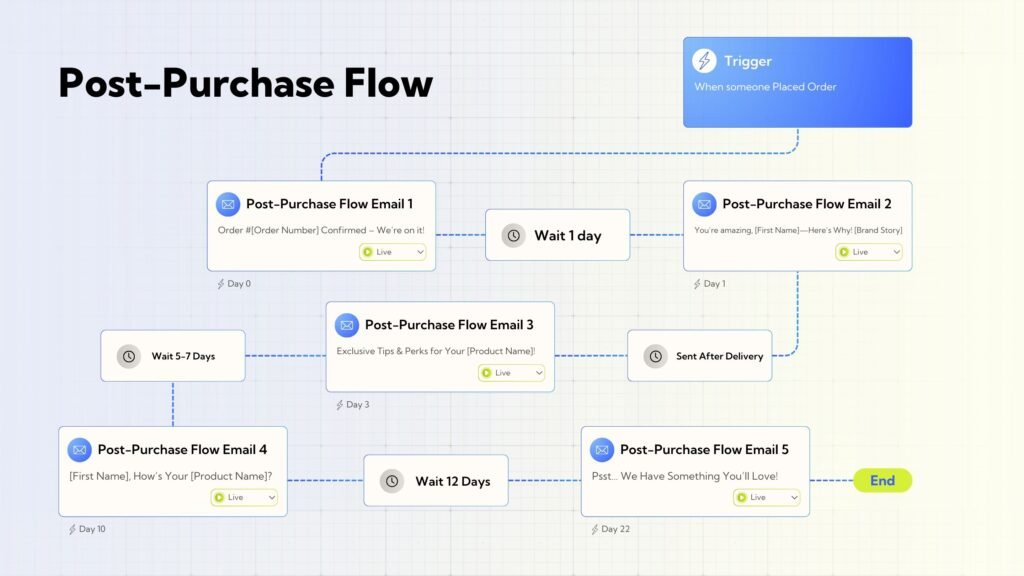
To create a memorable experience and drive repeat sales, your email flow should include:
1. Order Confirmation (Sent Immediately)
- Reassure customers that their order was successfully placed.
- Provide order details, estimated delivery time, and a clear call to action (e.g., “Track Your Order”)
- Keep it simple, but friendly—this is your first touchpoint after the sale.
Best Practice: Add personalisation with the customer’s name and order summary.
2. Thank You & Brand Story (Sent Within 24 Hours)
- Show appreciation with a heartfelt thank-you email.
- Reinforce your brand values, mission, or social impact.
- Let them know how they can contact support if needed.
Best Practice: A genuine “thank you” strengthens customer relationships and encourages future engagement.
3. Product Usage Tips & Support (Sent After Delivery)
- Show appreciation with a heartfelt thank-you email.
- Reinforce your brand values, mission, or social impact.
- Let them know how they can contact support if needed.
Best Practice: A genuine “thank you” strengthens customer relationships and encourages future engagement.
4. Review Request (Sent 5-7 Days After Delivery)
- Ask for feedback and encourage customers to leave a review.
- Keep it easy—a simple one-click review request flow boosts engagement.
- If possible, offer a small incentive like a discount on their next purchase.
Best Practice: Customer feedback not only improves your business but also builds social proof to influence new buyers.
5. Upsell & Cross-Sell Recommendations (Sent Within 2 Weeks)
- Suggest complementary products based on their purchase.
- Highlight best sellers or introduce new arrivals.
- Use a limited-time offer to create urgency.
Best Practice: Use personalised product recommendations to make the offer feel tailored.
How to Optimise Your Post-Purchase Emails for Maximum Impact
- Express Gratitude: A simple “thank you” goes a long way in customer retention.
- Provide Value: Offer helpful information before asking for another purchase.
- Encourage Engagement: Drive traffic to your website with educational content, social media links, or loyalty programs.
- Leverage Personalisation: Use customer data to send targeted emails that feel relevant and authentic.
- Test & Improve: Track open rates, click-through rates, and conversions to refine your email strategy.
Build Lasting Relationships, Not Just Sales
A strong post-purchase email flow does more than confirm an order—it builds trust, encourages repeat purchases, and strengthens brand loyalty. By keeping the conversation going, you can turn one-time buyers into lifelong customers.
Winback Flow
Not every customer stays engaged forever. Life gets busy, inboxes get crowded, and sometimes, people just forget about your brand. In fact, 27% of consumers report never hearing from a business again after their initial purchase. That’s a huge missed opportunity!
A well-timed winback email flow is designed to re-engage inactive customers, remind them of why they loved your brand, and bring them back to make another purchase. The key? A mix of personalisation, urgency, and the right incentive to get them excited again.
How to Structure Your Winback Email Flow

A successful winback flow isn’t about spamming customers—it’s about reminding them of what they’re missing. Here’s how to do it effectively:
1. The Gentle Nudge (Sent After 30-60 Days of Inactivity)
- Start with a friendly reminder email acknowledging their past engagement.
- Use personalisation—mention their previous purchase or favourite category.
- Keep it light and inviting, with a CTA like “Come See What’s New!”.
Best Practice: Use segmentation to tailor messages based on browsing history or purchase behaviour.
2. The Special Offer (Sent a Few Days Later)
- If they didn’t respond to the first email, follow up with a small reactivation incentive (discount, free shipping, loyalty points).
- Highlight new arrivals or personalised product recommendations.
- Create urgency with a limited-time deal, e.g., “Your Exclusive 15% Off Expires in 48 Hours!”.
Best Practice: Test different offers—sometimes a simple “We Miss You” email is enough to re-engage.
3. The FOMO-Driven Reminder (Final Attempt After a Week)
- Show them what they’re missing out on—best sellers, customer favourites, or a time-sensitive promotion.
- Use social proof—customer reviews or testimonials work wonders.
- Add an element of exclusivity: “Only a Few Left—Grab Your Favourite Before It’s Gone!”
Best Practice: Keep it short, visually engaging, and action-oriented.
How to Optimise Your Winback Emails for Maximum Results
- Segment Your List: Not all inactive customers are the same—tailor emails based on their last purchase or browsing behaviour.
- Use Personalisation: Mention their name, past purchases, or categories they showed interest in.
- Test Subject Lines & Content: A/B test different approaches (e.g., curiosity-driven, incentive-focused, or social proof-heavy).
- Make It Easy to Come Back: Include a clear CTA, such as “Shop Now”, “Reactivate Your Account”, or “Claim Your Offer”.
- Know When to Let Go: If a customer doesn’t respond after multiple attempts, consider removing them from your list or moving them to a lower-engagement segment.
Don’t Let Customers Slip Away
Re-engaging inactive customers isn’t just about recovering lost revenue—it’s about maintaining a strong customer relationship. A well-planned winback email campaign can turn a fading connection into a thriving one, bringing customers back to your website and boosting long-term loyalty.
Browse Abandonment Flow
Ever had a customer browse your site, check out your products, and then… disappear? It happens all the time. But just because they didn’t add something to their cart doesn’t mean they’re not interested. They might have gotten distracted, needed more time to decide, or simply forgotten.
This is where a browse abandonment email flow comes in. These emails serve as a friendly nudge, reminding potential customers of what caught their eye and encouraging them to return. And they work—emails with personalised product recommendations drive 760% more revenue compared to non-personalised emails.
If you’re not sending browse abandonment emails, you’re missing a huge opportunity to convert interested visitors into paying customers.
How to Structure an Effective Browse Abandonment Email Flow
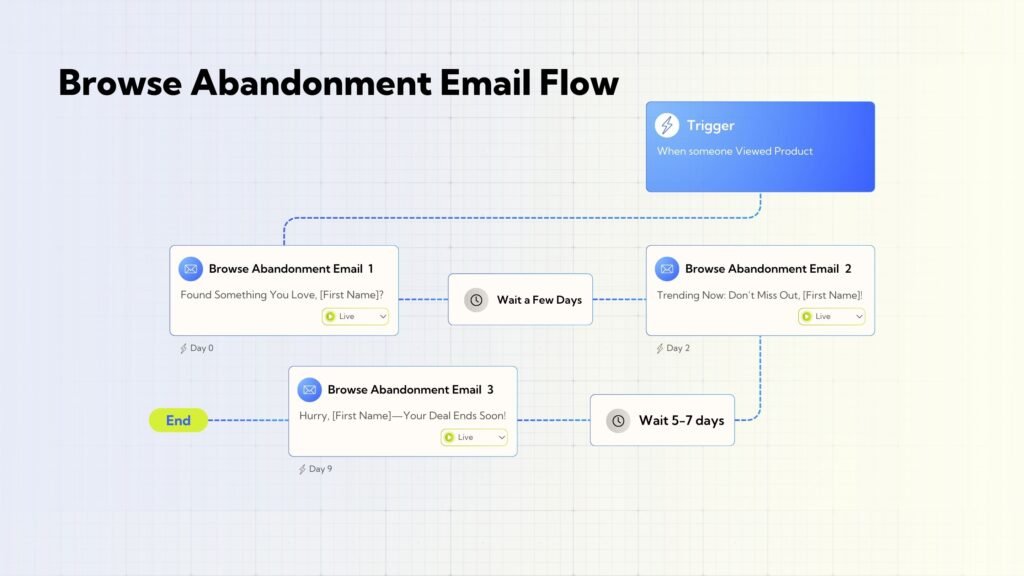
Unlike abandoned cart emails, where the customer has already committed to adding an item to their cart, browse abandonment emails need to be a bit more subtle. Here’s how to do it:
1. The Friendly Reminder (Sent Within 24 Hours)
- Keep it casual—acknowledge their visit without being pushy.
- Show the exact products they viewed for an instant recall.
- Include a simple call to action (CTA) like “Take Another Look.”
Best Practice: Use personalisation—mention their name and show tailored product recommendations based on their browsing behaviour.
2. The Social Proof Boost (Sent a Few Days Later)
- Showcase best sellers or customer favourites in the same category.
- Include testimonials or reviews to build trust.
- Keep the messaging light, e.g., “Still Thinking? Here’s What Others Love!”
Best Practice: Use high-quality visuals to make the products even more enticing
How to Optimise Your Browse Abandonment Flow for Maximum Conversions
- Use Dynamic Content: Showcase recently viewed items to create a personalised experience.
- Make It Visually Appealing: Use clear product images, engaging design, and a straightforward layout.
- Test Subject Lines & CTAs: A/B test subject lines to see what gets the best open rates.
- Leverage Social Proof: Reviews, testimonials, and customer feedback add credibility.
- Keep It Subtle, Not Salesy: The goal is to re-engage, not pressure—make it feel like a helpful reminder.
Turn Window Shoppers into Customers
A well-crafted browse abandonment email flow bridges the gap between interest and purchase. By personalising recommendations, showcasing social proof, and using subtle urgency, you can turn casual browsers into loyal customers.
Ready to Create your Email Marketing Flows for Your Ecommerce?
If you’ve made it this far, you now have a solid understanding of the five essential email flows for ecommerce—each one designed to engage customers, recover lost sales, and drive revenue on autopilot. From welcome emails that make a great first impression to winback campaigns that bring customers back, every email flow plays a vital role in your overall email marketing strategy.
The best part? Once these automated flows are in place, they continue working for you, nurturing relationships and boosting revenue with minimal effort. And with email marketing delivering an average ROI of $36 for every $1 spent, it’s one of the most effective marketing tools you can invest in.
Take Action Today
Now that you know the power of these email marketing flows, the next step is simple—start implementing them today. Whether you’re just getting started with marketing automation or looking to refine your existing email campaigns, now is the time to take action.
- Set up your first flow—start with a welcome email series and build from there.
- Test and optimise—track open rates, click-through rates, and conversions to fine-tune your approach.
- Personalise your emails—use customer data to make each email feel tailored and relevant.
If you need help setting up email automation or fine-tuning your ecommerce email strategy, we’re here to help. Get in touch with us today, and let’s build high-converting email flows that keep your customers engaged and your sales growing.
Want more holiday inspiration?
In 2025, make your emails shine with festive energy, strategic timing, and memorable messaging. Want more holiday inspiration? Let Webfuel Digital help you embrace the holiday with emails that deliver results. Contact us today!



